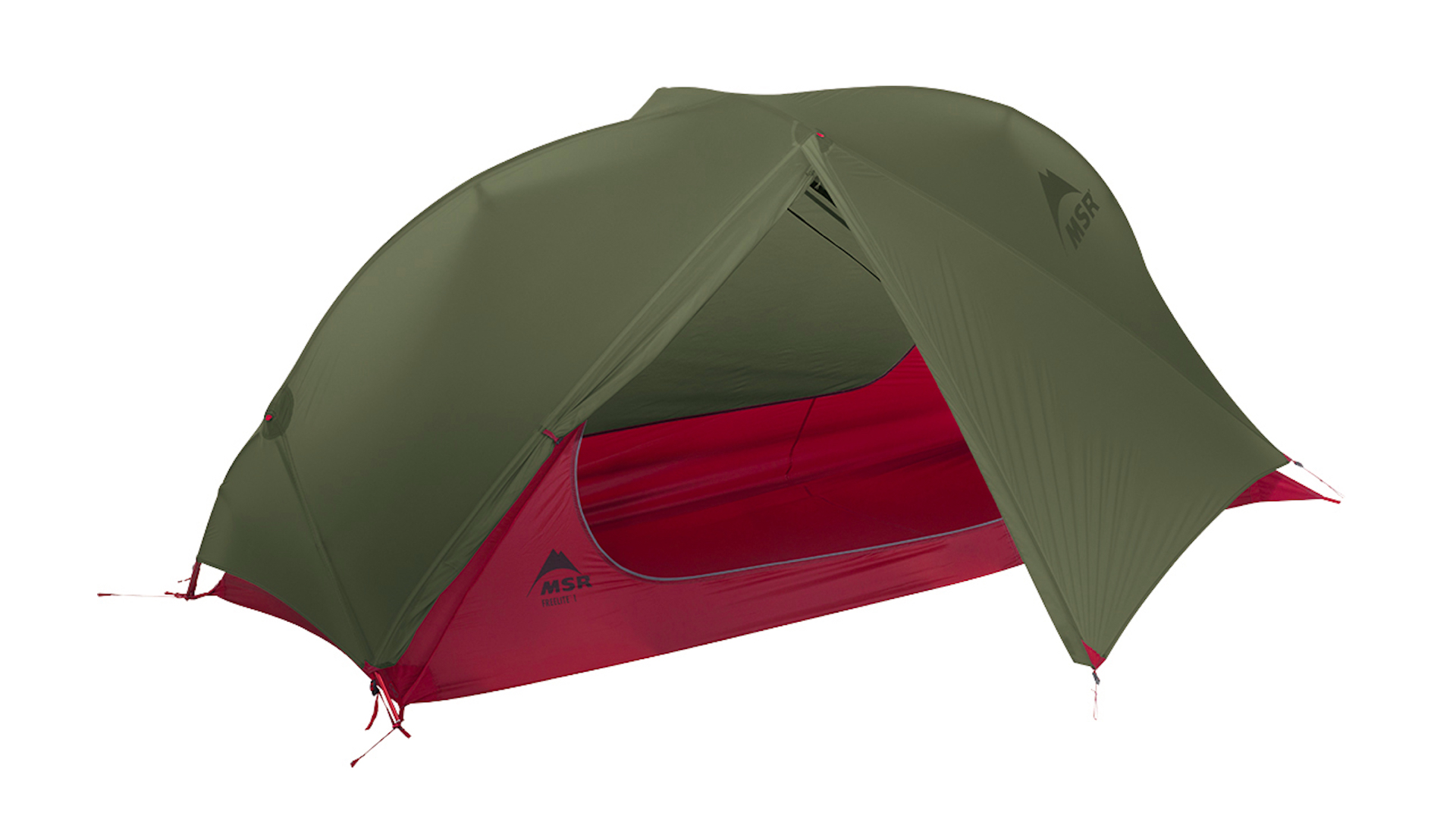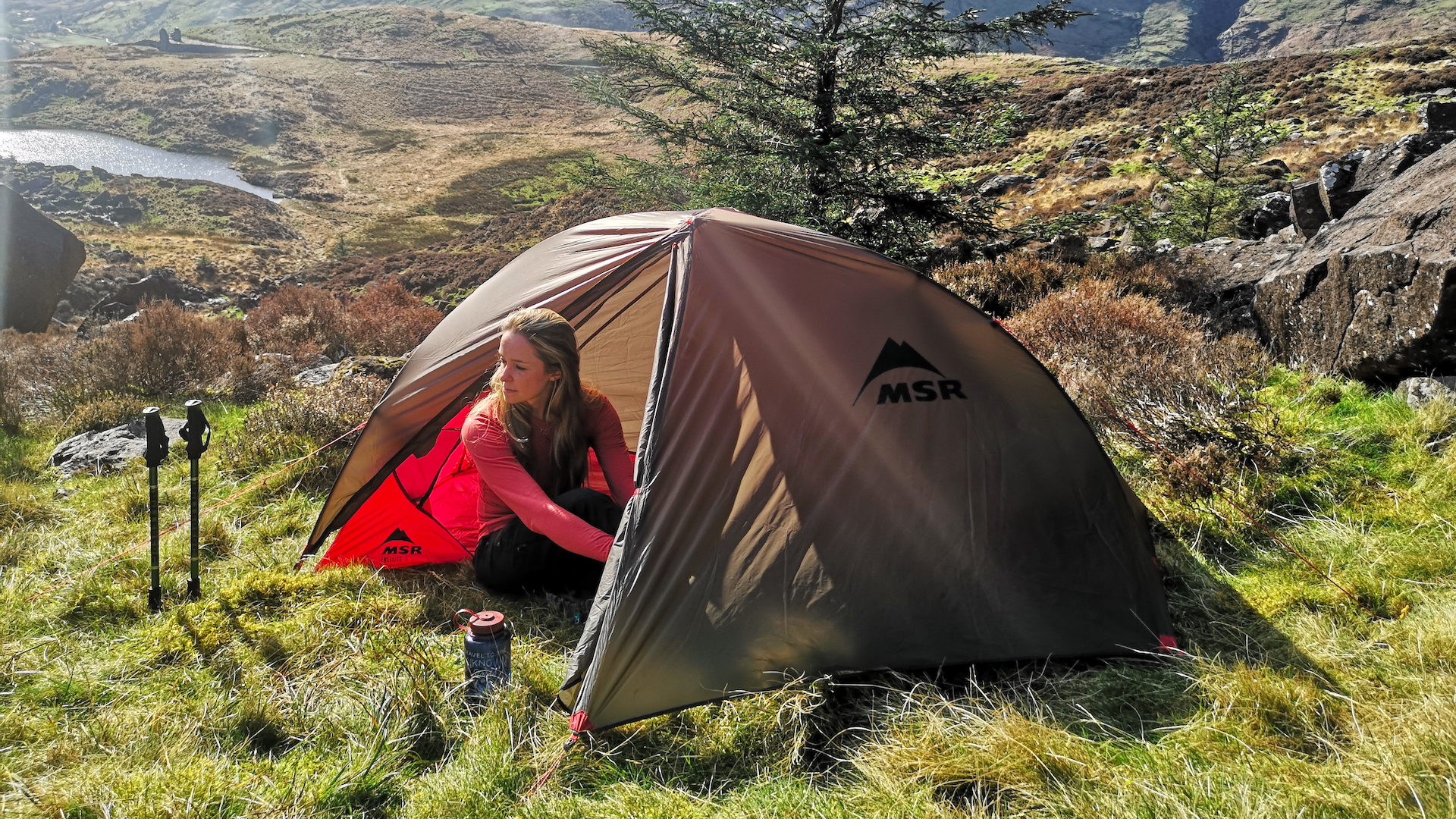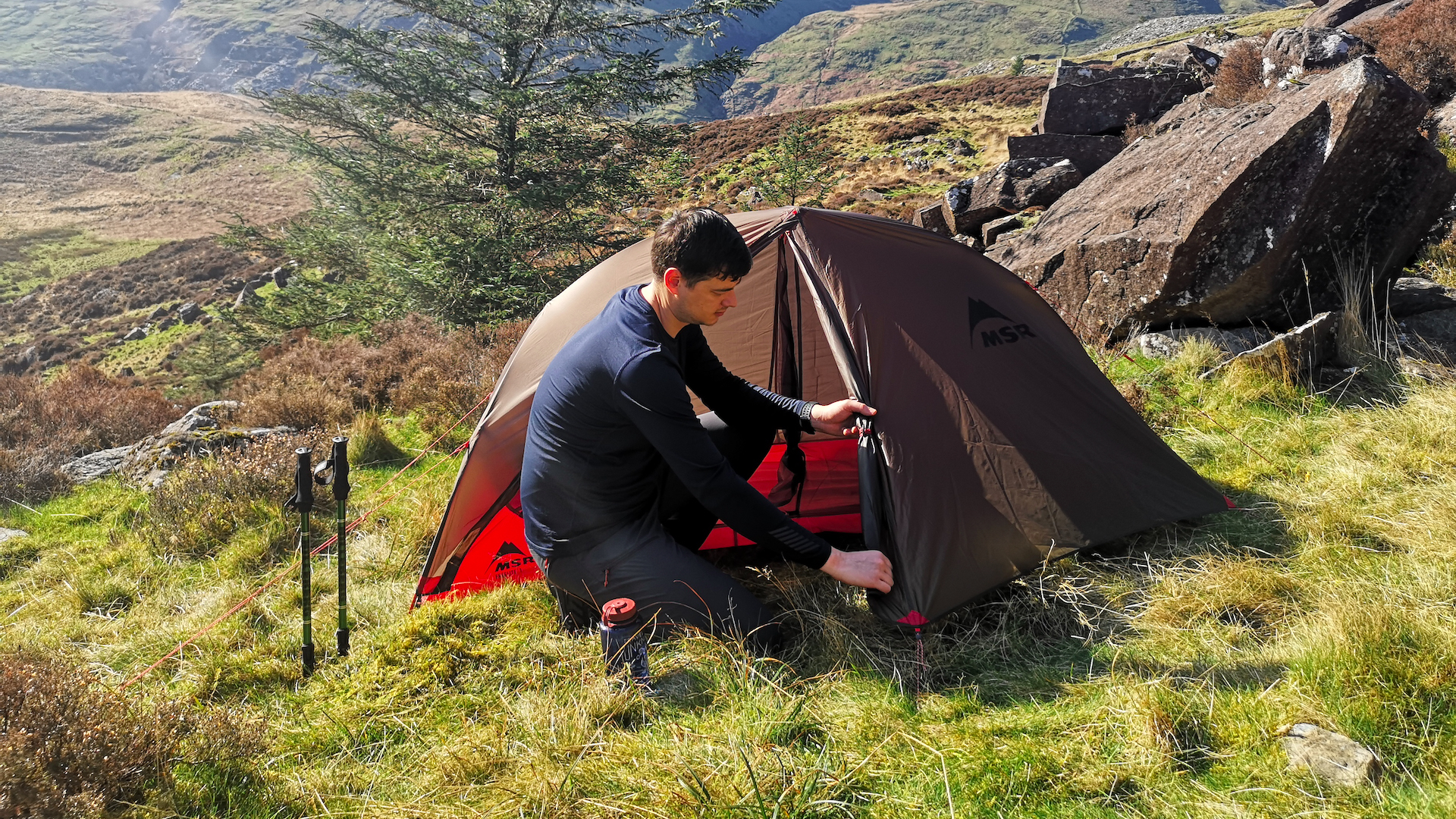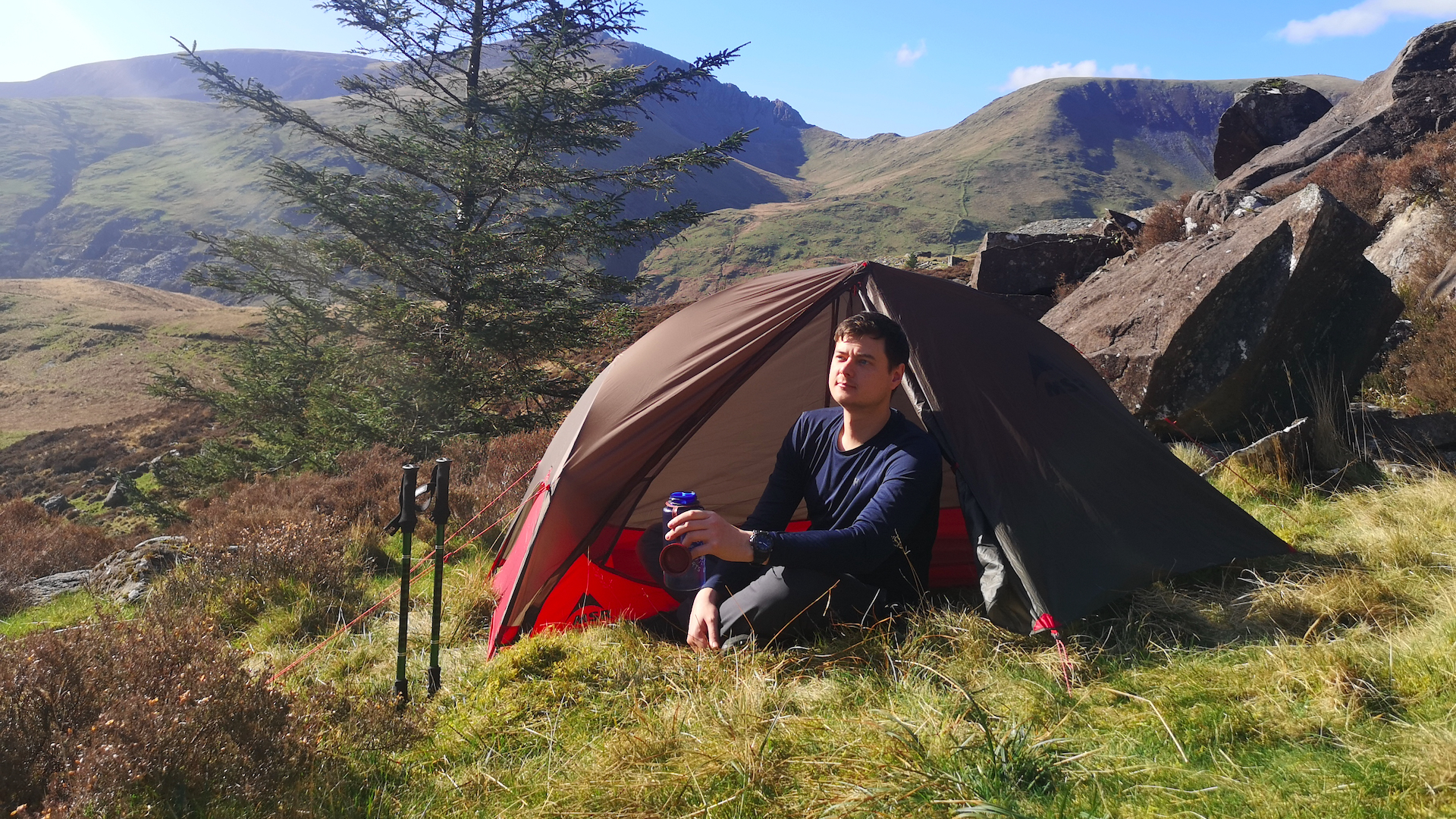Advnture Verdict
Though we don’t think the design is flawless, this ultralight double-skinned tent offers plenty of space at minimal weight, making it a good option for solo backpackers.
Pros
- +
Good headroom
- +
Spacious porch area
- +
Extremely lightweight
Cons
- -
Thin, delicate fabrics
- -
Steep rear wall can catch the wind
- -
Flysheet doesn’t offer the best all-round coverage
You can trust Advnture
MSR FreeLite 1: first impressions

Looking at the MSR FreeLite 1 packed in its stuff sack, it’s hard not to be immediately impressed by its compact size and extraordinarily low weight – especially when you check the specs and find that it’s a double-skinned, poled tent, not some gossamer thin, single-skinned, trekking pole shelter. Weighing in at under a kilo, this makes it well-suited to almost any wild or ultralight camping adventure, where every gram counts.
The expectation is that it’ll be a fairly minimalist and cramped tent. But actually, when pitched the MSR Freelite 1 boasts great headroom and a generous rectangular inner footprint with good length and width throughout. In addition, a generous porch area means that your gear doesn’t have to be stored in the tent with you. All in all, it makes for one of the most liveable solo tents around.

This seemingly physics-defying feat is achieved via a clever design that incorporates steep walls and a clever overhead spreader bar, combined with ultralight yet weatherproof fabrics. Admittedly, extraneous features are omitted, so the tent lacks some of the familiar “life on the trail” conveniences of its rivals in our best one-person tent buying guide – like inner storage pockets, for example. There are hanging tabs for a gear line or loft though, so you can add a few home comforts if desired.
• RRP: $370 (US) / £395 (UK)
• Weight: 880g / 1lb 15oz
• Pack size: 46cm x 10cm / 18in x 4in
• Length: 221cm / 87in
• Compatibility: Three-season backpacking
MSR FreeLite 1: in the field
The tent pitches inner first, which makes for quick and easy setup, though, of course, this design is less practical if it’s already raining by the time you come to set up camp. On the other hand, it does mean the mesh inner can be used as a standalone bug shelter for camping in warmer and milder climates, where your main requirements might be the need for privacy and insect-proofing rather than worries about inclement weather.
This is a very practical solo tent. We particularly appreciated the clever door design, which is constructed so that the two zippers always meet in the same place – ergo, no fumbling around for them in the dark. The mesh inner also provides ample ventilation for good airflow and minimal condensation. It’s a very pleasant place to spend the night.
The fly also provides good all-round coverage except at one end of the tent, where only a single fabric portion of the inner guards against water ingress. This caused us some initial concern, but on test in drizzly North Wales it didn’t prove a problem.

It’s worth noting that MSR’s fabrics have a lower Hydrostatic Head rating than many rival tent manufacturers. Of course, there’s more to waterproofing than lab stats and numbers alone, and the brand are confident that in real world scenarios their tents will stand up to the wet weather just as well as comparable models. We certainly experienced no issues in this regard – though the fabrics are very thin. The groundsheet in particular looks liable to puncturing, and we’d recommend using a tent footprint with the FreeLite 1 when possible.
All the latest inspiration, tips and guides to help you plan your next Advnture!
As with most ultralight solo shelters, this is a tent designed for the milder months – we’d class it as a two-to-three season model. It’s also better suited to sheltered camp spots rather than exposed hillsides, since one side of the tent has a steep wall that can catch the wind. Just be sensible about where you pitch it and you’ll be fine.
An outdoors writer and editor, Matt Jones has been testing kit in the field for nearly a decade. Having worked for both the Ramblers and the Scouts, he knows one or two things about walking and camping, and loves all things adventure, particularly long-distance backpacking, wild camping and climbing mountains – especially in Wales. He’s based in Snowdonia and last year thru-hiked the Cambrian Way, which runs for 298 miles from Cardiff to Conwy, with a total ascent of 73,700 feet – that’s nearly 2½ times the height of Everest. Follow Matt on Instagram and Twitter.


